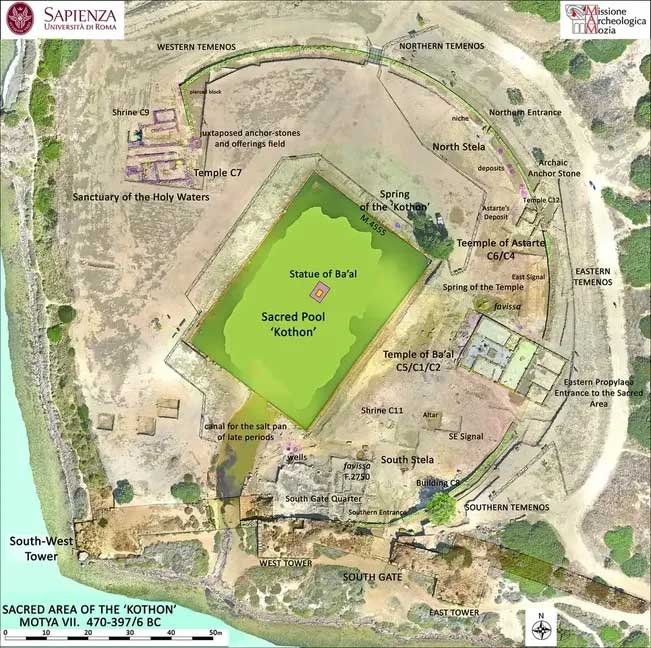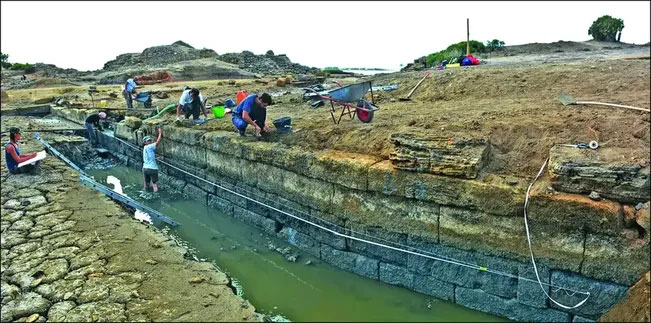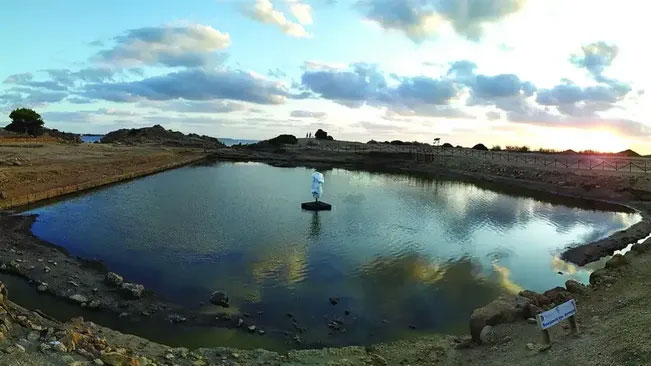According to a new study published in the journal Antiquity, a sacred lake used by the ancient Phoenicians for religious purposes and to track the movements of stars has been discovered at the ancient island city of Motya in Italy.
The study presents a new interpretation of an artificial basin, referred to as “kothon”, located in the ancient island city of Motya in present-day western Sicily, Italy. According to the lead researcher, archaeologist Lorenzo Nigro from Sapienza University, this structure is not a military harbor as previously thought, but rather an “astronomical sacred lake situated at the center of a grand sanctuary.” This discovery sheds light on the ancient Phoenician culture and their relationship with nature.

The location of the sacred lake on the map.
Kothon (a term used by Greek and Latin authors) was initially discovered in the early 1920s, dating from 550 to 397 BC. Initially, archaeologists thought it was an artificial harbor. This assumption stemmed from the existence of a similar structure in Carthage that functioned as a military port.
However, the new study has dismissed this long-standing interpretation, asserting that the 2,500-year-old structure is in fact a sacred lake, making it one of the largest lakes found in the Mediterranean region.
Excavations at the site from 2002 to 2010 led to the discovery of the Temple of Ba’al. The temple was found along the edge of the kothon and is believed to have been a place of worship for Phoenician deities. The discovery of a temple near what was thought to be a military harbor raised questions among researchers. Consequently, they have tirelessly worked for decades to delve deeper into the area. The research team had to drain all the water and excavate the basin, which measures 172 feet (52.5 meters) in length and 119 feet (36.25 meters) in width. This size exceeds that of an Olympic swimming pool.

The “kothon” was drained during the excavation process.
Nigro stated: “We excavated the layers one by one to reconstruct the complex history of the area and discovered that it was connected to a natural spring aquifer.” Indeed, as the excavations revealed, the kothon is believed to be disconnected from the sea; instead, its water is supplied by natural springs. Therefore, the assertion that this was once a seaport is entirely unfounded.
More importantly, archaeologists also discovered a temple near the lake, an architectural structure dedicated to the Phoenician goddess Astarte, and a third building labeled “Sanctuary of the Holy Water.” Burial stones, altars, votive offerings, and a base in the center of the basin were also found. The base still bears the remnants of a statue that once stood atop it. Scientists believe this statue represented the god Ba’al. Collectively, the evidence led the research team to conclude that the lake was the center of a religious sanctuary.
But that’s not all. A map of the lake shows it was aligned with the positions of the stars and was used to track celestial movements. Specifically, the researchers wrote:
“The water surface acted like a large screen, which could be used for astronomical observation by using poles to mark the positions of the stars reflected in the water, allowing for the observation and measurement of celestial bodies as well as their angles relative to the horizon.”
Nigro expressed his excitement about this special discovery: “The fact that the ancient Phoenicians intended to harmonize their lives with the cosmos and nature… For them, the gods were the stars, and nature was an inspiration in life.”

After excavation, the basin was refilled with water, and a restored statue was placed on the base at the center.
Redefining the kothon and the characteristics of this basin provides modern humanity with additional knowledge about the ancient Phoenicians, a civilization that lasted from around 2500 BC until 64 BC, when the leader Pompey conquered Phoenicia. According to Nigro, the new findings suggest that the Phoenicians “used this religious complex as a place to blend and exchange traditional cultures as well as to gather various Mediterranean cultures.” However, this openness came at a high cost, leading to the siege of Motya in 398-397 BC.
After completing the excavation work, Nigro’s team refilled the basin and placed a statue of Ba’al on the base. Everything has been restored, reminiscent of the sacred place that once existed many years ago.


















































